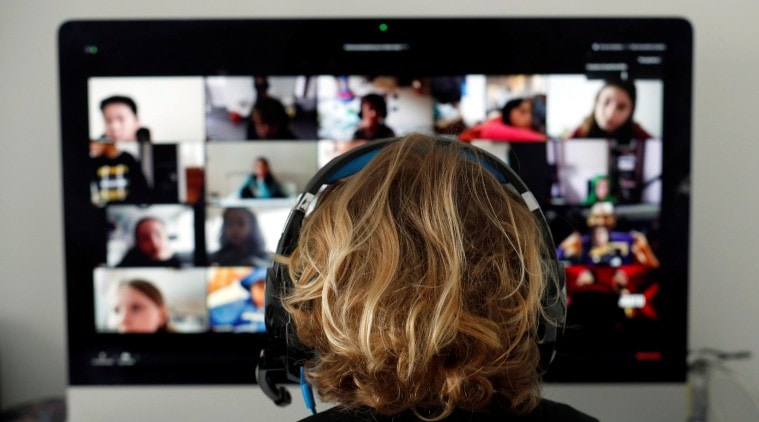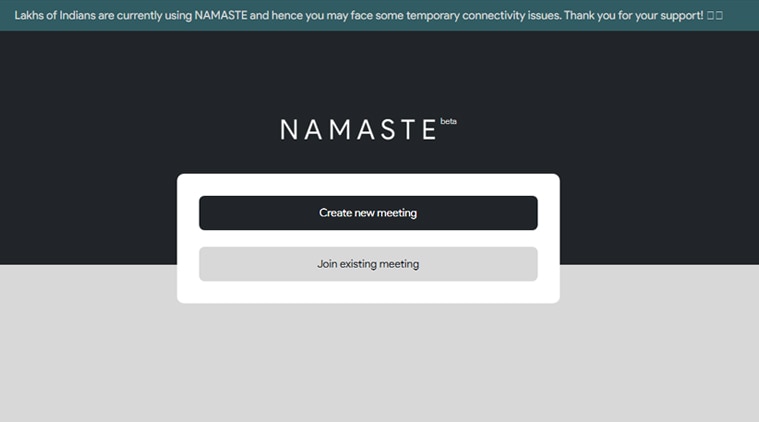 Say Namaste is still in beta, but already has over 5,00,000 users and is preparing for a full commercial launch. (Image: Reuters)
Say Namaste is still in beta, but already has over 5,00,000 users and is preparing for a full commercial launch. (Image: Reuters)
The government’s clarion call for a Zoom alternative has spurred a decade-old Mumbai startup to come up with a made-in-India video conferencing platform. Say Namaste is still in beta, but already has over 5,00,000 users and is preparing for a full commercial launch.
Last week, the Indian government had urged startups to develop an alternative video conferencing app to Zoom after the spate of security issues were reported about the popular video app. Zoom has been one of the biggest beneficiaries of the lockdown and the change in work environments across the world, zooming to 300 million users globally despite its flaws.
As the security concerns piled up, the government issued a request to not use the platform as it might put personal data at risk. Besides offices, schools are also using Zoom to educate students remotely. Several companies around the world including Google, Tesla have also banned employees from using Zoom to connect for work.
This is when Inscripts started working on a “made in India and for India” video conferencing platform. CEO Anuj Garg told indianexpress.com that the two key ideas behind Say Namaste are — privacy and easy to use interface. “We have always taken privacy and security seriously and as an organisation we are completely compliant with GDPR,” Garg said.
Contrary to rumours, this is not an app developed by the Indian government.
 Say Namaste is now preparing to Indian government’s ‘Innovation Challenge’.
Say Namaste is now preparing to Indian government’s ‘Innovation Challenge’.
Learning from Zoom’s experience, Say Namaste is exploring multiple encryption options that work best in terms of security, privacy and performance for the service. Garg explained, “Say Namaste uses both proprietary and open source tech for now. We are using different techniques, such as encrypting data packets in rest, transit, cryptographic keys and so on. We are operating through our servers based in India, so data residency is ensured.”
“We have also started pilots with some enterprises focusing on unique needs, building the required safeguards into the whole system which are also critical pieces of the security puzzle,” he added.
Also Read: How to use Say Namaste
And in a very Indian innovation, the company will soon add two-factor authentication, which would help verify participants on a video call. “We are also looking to enable directory indexing of email addresses by organisations, which can then restrict video call sessions to only a list of pre-selected email addresses, to keep intruders out of the call,” the CEO said.
 Say Namaste is exploring multiple encryption options that work best in terms of security, privacy and performance for the service.
Say Namaste is exploring multiple encryption options that work best in terms of security, privacy and performance for the service.
In the coming weeks Say Namaste will be conducting its first independent security audit to identify any security oversights. Once these are fixed, the platform will move towards a commercial launch.
Commercial launch soon
“We have submitted mobile apps for Android and iOS that are under review,” Garg said. Currently, the platform supports upto 25 participants, but the company is working to develop support for 100 live participants in one call. “We are working to fix all the issues, roll out the apps and even add some new intuitive features. The end goal is to provide a delightful user experience,” Garg added.
Ready for ‘Innovation Challenge’
Say Namaste is now preparing to Indian government’s ‘Innovation Challenge’ for startups to develop a made-in-India secure video calling application. “We want to make sure our product is completely bug-free and ready for the final launch, and we will also be sending in our application for the innovation challenge hosted by the Ministry of Electronics and Information Technology (MeitY),” Garg said.
“The initial thought process was to start using the product internally and in two days our team of 50-odd developers built the internal beta version of Say Namaste consuming one of our own products as a customer would. Once we fixed the initial bugs, we wanted to explore further and customise it to connect better with the Indian audience.”
The sudden surge in users on SayNamaste.in has led to some issues for a small percentage of the total user base, but Garg said the tech and product teams are working non stop to scale the platform to “manage the incoming traffic and provide a flawless experience to the users”. He said any bugs or connectivity issues should be fixed in the next few days.